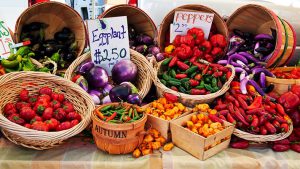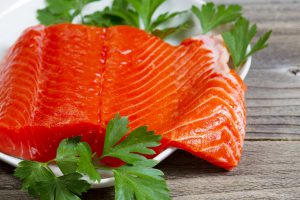What is the food of the future? In a recent seminar at the 2016 Food and Nutrition Conference and Expo in Boston, this food was identified as pulses. No. Not like the cardiovascular pulses that assure us that our hearts are still pumping. Instead these pulses enhance how well our hearts work and include dried beans, dried peas, chickpeas, and lentils. Dr. John Sievenpiper presented a Canadian study that showed pulses having a significant effect not only on cardiovascular events, but also on diabetes outcomes.
In his resea rch, Sievenpiper has found that incorporating 120 g of pulses a day into the diet has a positive effect on glycemia, lipid levels, blood pressure and body weight. How does this happen? His collaborative studies over the past decade have shown that pulses reduce starch absorption and reduce postprandial glycemia,. By including five servings of pulses a week and following a low glycemic diet (and watching blood sugar levels), hemoglobin A1c can be significantly (p<0.05) improved. Pulse servings eaten consistently through the week were also shown to significantly reduce more weight than isocaloric diets and reduce coronary heart disease risks.
rch, Sievenpiper has found that incorporating 120 g of pulses a day into the diet has a positive effect on glycemia, lipid levels, blood pressure and body weight. How does this happen? His collaborative studies over the past decade have shown that pulses reduce starch absorption and reduce postprandial glycemia,. By including five servings of pulses a week and following a low glycemic diet (and watching blood sugar levels), hemoglobin A1c can be significantly (p<0.05) improved. Pulse servings eaten consistently through the week were also shown to significantly reduce more weight than isocaloric diets and reduce coronary heart disease risks.
In a case study example, Dr. Sievenpiper brought up a 74-year-old overweight patient with dyslipidemia and metabolic syndrome. He prescribed a Portfolio Diet to replace the high red meat and refined carbohydrate, low fiber, fruit and vegetable diet he had been consuming. The Portfolio Diet includes a variety of cholesterol-reducing food such as, 20 g of fiber from vegetables, whole grains, and pulses and 45 grams of plant proteins including soy products and pulses. After following this patient for less than two years, his triglyceride levels had decreased by 47% and his LDL levels had improved by 78%! While this may not be the standard for every patient, it is quite a show of success.
This information could be life-saving for some patients in desperate need to improve their health. Type 2 diabetes, hypertension, and obesity go hand in hand, and with a few changes to the diet all three could be improved. Clinical practice guidelines are beginning to shift from nutrient-based recommendations, such as low carb or high protein, to more food and dietary pattern-based recommendations. Increasing pulse servings in the diet fits right in with this strategy and can be much more easily understood to the standard layperson. Additionally, the inclusion of pulses can be incorporated into widely recognized and evidence-based diets like the Mediterranean Diet or the DASH diet very simply. More randomized control trials are needed in this area, but the data looks incredibly promising.
Kim SJ, de Souza RJ, Choo VL, Ha V, Cozma AI, Chiavaroli L, Mirrahimi A, Blanco Mejia S, Di Buono M, Bernstein AM, et al. Effects of dietary pulse consumption on body weight: a systematic review and meta-analysis of randomized controlled trials. The American Journal of Clinical Nutrition 2016;103(5):1213-23. doi: 10.3945/ajcn.115.124677.
Ha V, Sievenpiper JL, de Souza RJ, Jayalath VH, Mirrahimi A, Agarwal A, Chiavaroli L, Blanco Mejia S, Sacks FM, Di Buono M, et al. Effect of dietary pulse intake on established therapeutic lipid targets for cardiovascular risk reduction: a systematic review and meta-analysis of randomized controlled trials. Canadian Medical Association Journal 2014. doi: 10.1503/cmaj.131727.




